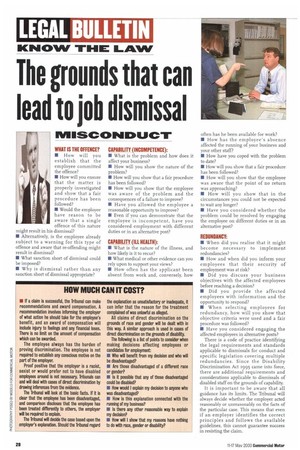HOW MUCH CAN IT COST?
Page 30

If you've noticed an error in this article please click here to report it so we can fix it.
• If a claim is successful, the Tribunal can make recommendations and award compensation. A recommendation involves informing the employer of what action he should take for the employee's benefit, and an award of compensation will include injury to feelings and any financial loses. There is no limit on the amount of compensation which can be awarded.
The employee always has the burden of proving discrimination. The employee is not required to establish any conscious motive on the part of the employer.
Proof positive that the employer is a racist, sexist or would prefer not to have disabled employees around is not necessary. Tribunals can and will deal with cases of direct discrimination by drawing inferences from the evidence.
The Tribunal will look at the basic facts. If it is clear that the employee has been disadvantaged, and comparison discloses that the employee has been treated differently to others, the employer will be required to explain.
The Tribunal will decide the case based upon the employer's explanation, Should the Tribunal regard the explanation as unsatisfactory or inadequate, it can infer that the reason for the treatment complained of was unlawful as alleged.
All claims of direct discrimination on the grounds of race and gender will be dealt with in this way. A similar approach is used in cases of direct discrimination on the grounds of disability.
The following is a list of points to consider when making decisions affecting employees or candidates for employment: • Who will benefit from my decision and who will be disadvantaged?
• Are those disadvantaged of a different race or gender?
IV Is it possible that any of those disadvantaged could be disabled?
• How would I explain my decision to anyone who was disadvantaged?
II How is this explanation connected with the running of my business?
• Is there any other reasonable way to explain my decision?
• How will I show that my reasons have nothing to do with race, nder or disability?




































































































